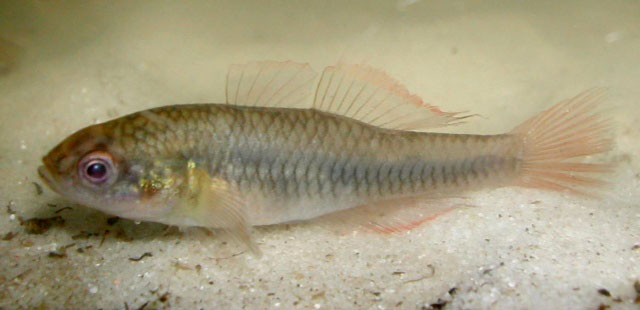| Eleotridae (Bully sleepers) |
| 5.5 cm TL (male/unsexed); 4 cm TL (female) |
|
demersal; freshwater |
| Oceania: coastal drainages of eastern Australia from Fraser Island, Queensland to Eden in southern New South Wales. |
|
Dorsal spines (total): 8-8; Dorsal soft rays (total): 11-12; Anal spines: 1-1; Anal soft rays: 11-12. This species is distinguished among southeastern Hypseleotris (except H. acropinna and H. moolooboolaensis by adult males having elonagted rays in posterior region of 2nd dorsal, and anal fins with fin tips extending along length of caudal peduncle. Differs from H. acropinna by presence of dark spots around genital papillae in females and differs from H. moolooboolaensis by lateral scales 31-33 (vs. 33-34) (Ref. 128732). |
| Occurs in streams, ponds, swamps and drains, usually among aquatic weeds. Juveniles feed on zooplankton while adults on insects, larvae and small crustaceans. Breeds between October and January in response to rising water temperatures. Male colouration intensifies at this time. Eggs are laid underneath rock ledges, logs or leaves and are guarded and fanned by the male parent until hatching, 3-5 days later (Ref. 44894). |
|
Least Concern (LC); Date assessed: 15 February 2019 Ref. (130435)
|
| harmless |
Source and more info: www.fishbase.org. For personal, classroom, and other internal use only. Not for publication.

